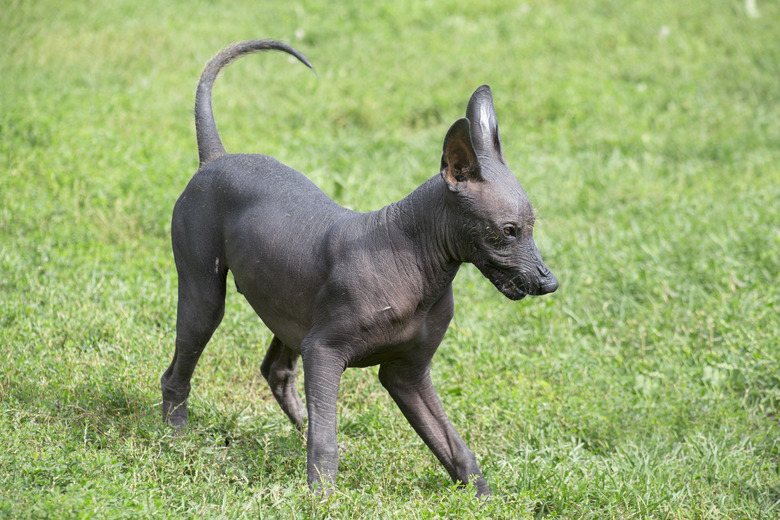List Of Allergy-Free Dogs
If you dream of having a dog but suffer from a pet allergy, you're not alone. In the United States, it's estimated that 10 to 20 percent of the population have allergic reactions to cats and dogs. The good news is that you aren't doomed to a dog-free life, as certain types of dogs are better for those with allergies than others.
What causes pet allergies?
What causes pet allergies?
People can have allergic reactions to the proteins found in a dog's skin cells, saliva, or urine. The majority of people with dog allergies experience symptoms in reaction to saliva and dander (shed flakes of dead skin). Allergic reactions usually include a runny nose, sneezing, itchy or watery eyes, congestion, and cough. Those who are allergic to saliva may experience itching, welts, or hives after being licked by a dog. People with asthma may have their breathing affected by allergies.
Are there dander-free dog breeds?
Are there dander-free dog breeds?
Certain dog breeds are alleged to be hypoallergenic. Unfortunately, there is no such thing as a hypoallergenic dog. Since all dogs produce dander, dander-free dog breeds do not exist. A study reported by the National Library of Medicine found that there were no major differences in the levels of a main dog allergen in homes with dogs labeled as hypoallergenic compared to the levels in homes with dogs not labeled as such.
There are, however, some breeds that are considered low-allergy dogs. These are mainly breeds that are hairless, that do not shed, or that only shed minimally.
Dogs without hair
Dogs without hair
Hairless dogs, as the name suggests, have little or no hair. They do produce minimal dander, though shedding is low to none. They are still not 100 percent allergy-free dogs but are much less likely to aggravate allergies than a dog with a full coat.
Popular choices for hairless breeds include the Mexican hairless, American hairless terrier, Chinese crested, and Peruvian Inca orchid.
Low-shedding dogs
Low-shedding dogs
Low-shedding dogs are another good option for people with allergies. These dogs have coats that don't trap as much dander and are easier to groom.
There are many dogs that fit into the low-shedding category, including the basenji, bichon frise, border terrier, cairn terrier, Chihuahua, cockapoo, Italian greyhound, Labradoodle, Maltese, poodle (giant, standard, toy), Portuguese water dog, schnauzer (giant, standard, toy), Shih Tzu, Tibetan terrier, West Highland white terrier, and Yorkshire terrier.
Dogs who don't drool
Dogs who don't drool
While all dogs produce saliva, the particularly slobbery breeds can cause allergic reactions. "Doesn't drool" isn't a common description for a lot of breeds, but there is a solid list of dogs known to be the worst offenders.
Those who have pet allergies or know they are allergic to saliva should avoid the mastiff (American, Neapolitan, Spanish, bullmastiff), basset hound, coon hound (black and tan, redbone, bluetick), bloodhound, boxer, dogue de Bordeaux, English bulldog, English setter, French bulldog, great Dane, great Pyrenees, Irish water spaniel, Newfoundland, plott hound, Saint Bernard, and Shar-Pei.
Minimizing allergens at home
Minimizing allergens at home
Even with a hairless or low-shedding dog, dander is still a concern for allergy sufferers. Regularly bathing and grooming your dog will help reduce the dander levels in your home but be sure not to bathe your dog more often than recommended for his coat type, as this can irritate his skin.
Other tools in the battle against allergens are an air purifier with a HEPA (high-efficiency particulate absorbing) filter and vacuuming regularly. Some vacuum cleaners can be used with a certified asthma and allergy-friendly filter.
The bottom line
The bottom line
There's no such thing as a 100 percent hypoallergenic dog or an allergy-free dog, but some breeds are better for those with allergies: hairless, low-shedding, and nondrooling dogs. Keeping up with regular grooming and making friends with your vacuum can help to minimize allergens at home if you suffer from pet allergies.
References
- Asthma and Allergy Foundation of America: Pet Allergy: Are You Allergic to Dogs or Cats?
- Mayo Clinic: Pet Allergy
- American Kennel Club: Does a Completely Hypoallergenic Dog Exist?
- National Library of Medicine: Can F 1 Levels in Hair and Homes of Different Dog Breeds: Lack of Evidence to Describe any Dog Breed as Hypoallergenic
- American Kennel Club: Hairless Dog Breeds
- American Kennel Club: Best Hypoallergenic Dog Breeds for People With Allergies
